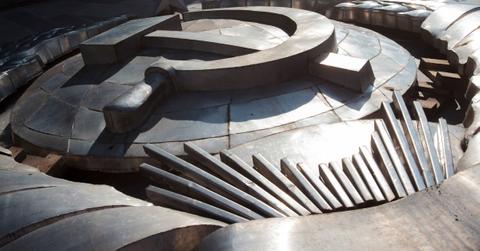Putin Concealing Secret Russian City More Radioactive Than Chernobyl Since Catastrophic Nuclear Disaster: Reports

The Mayak facility was founded during the Soviet era.
Jan. 10 2024, Published 11:02 a.m. ET
Vladimir Putin is reportedly concealing a secret city, more radioactive than Chernobyl, nestled deep within Russia's mountains, according to sources.
Known under the codename "City 40," Ozersk, situated in the southern Urals of Russia, is entirely isolated from the outside world and serves as the birthplace of the Soviet Union's nuclear program.
Initially constructed in secret to accommodate workers at the Mayak nuclear plant, Ozersk aimed to match the capabilities of the United States during the Cold War.
For decades, Ozersk remained absent from maps, with the residents' names expunged from records, including the Soviet census.
Presently, inhabitants require special visas to leave, foreigners are prohibited and barbed wire fences bearing "no trespassing" signs encircle its borders.
During its prime, Soviet authorities selected residents who were forbidden to leave or communicate with the outside world. Consequently, many were considered missing by their families.
At that time, City 40 was perceived as a haven compared to the rest of the famine-stricken Soviet Union under the communist regime, ensuring residents didn’t need anything to dissuade any thoughts of departure and potential exposure of the city's secrets.
However, the Mayak, central to the city's existence, experienced a catastrophic nuclear disaster known as the "Kyshtym Disaster" in 1957. This occurred due to Soviet technicians neglecting a broken cooling system in their nuclear waste repository for a year.
The resulting explosion, equivalent to 70 tons of TNT, released 60% more radioactive material into the air than Chernoby, per the Encyclopedia Britannica. The poisonous fallout drifted northeastward for hundreds of miles, affecting civilians beyond the blast zone.
Despite the severity of the incident, the Soviet regime suppressed information, revealing only tidbits to Western news outlets by 1958. The full extent of the disaster became public in 1976 when it was reported in the journal New Scientist. Soviet authorities instructed contaminated areas' peasants to harvest their crops, kill livestock, bury both and plow the land.
Never miss a story — sign up for the Front Page Detectives newsletter. Be on the scene the moment news breaks.
Today, Ozersk is referred to as the "Graveyard of the Earth," and its radioactive levels surpass any other location, according to The University of Chicago's Atomic Age project. The city remains isolated, still grappling with the aftermath of the disaster almost seven decades ago.
The Kyshtym catastrophe is ranked as the third-largest nuclear disaster in history by Nuclear-Risks.org. Despite the lingering risks, the facility employs 14,000 workers producing radioactive substances such as plutonium and uranium.
Additionally, it houses Russia's sole nuclear waste facility, becoming the final repository for the nation's decommissioned atomic arsenal.
While toxicity levels have diminished since the accident, nuclear waste continues to seep into surrounding bodies of water. Even today, fruit and vegetables grown in the area must undergo Geiger counter checks for radioactivity before being sold.
Become a Front Page Detective
Sign up to receive breaking
Front Page Detectives
news and exclusive investigations.
